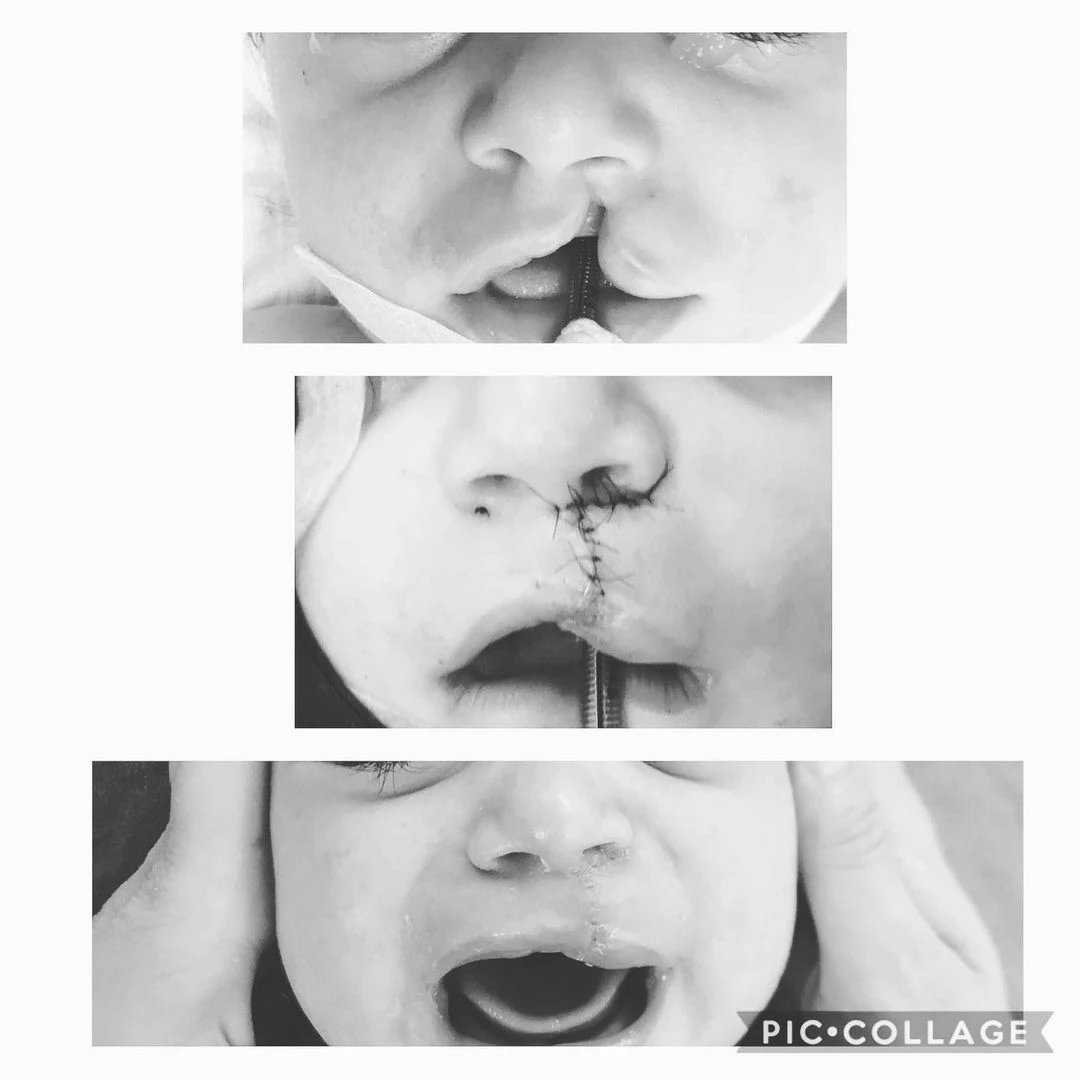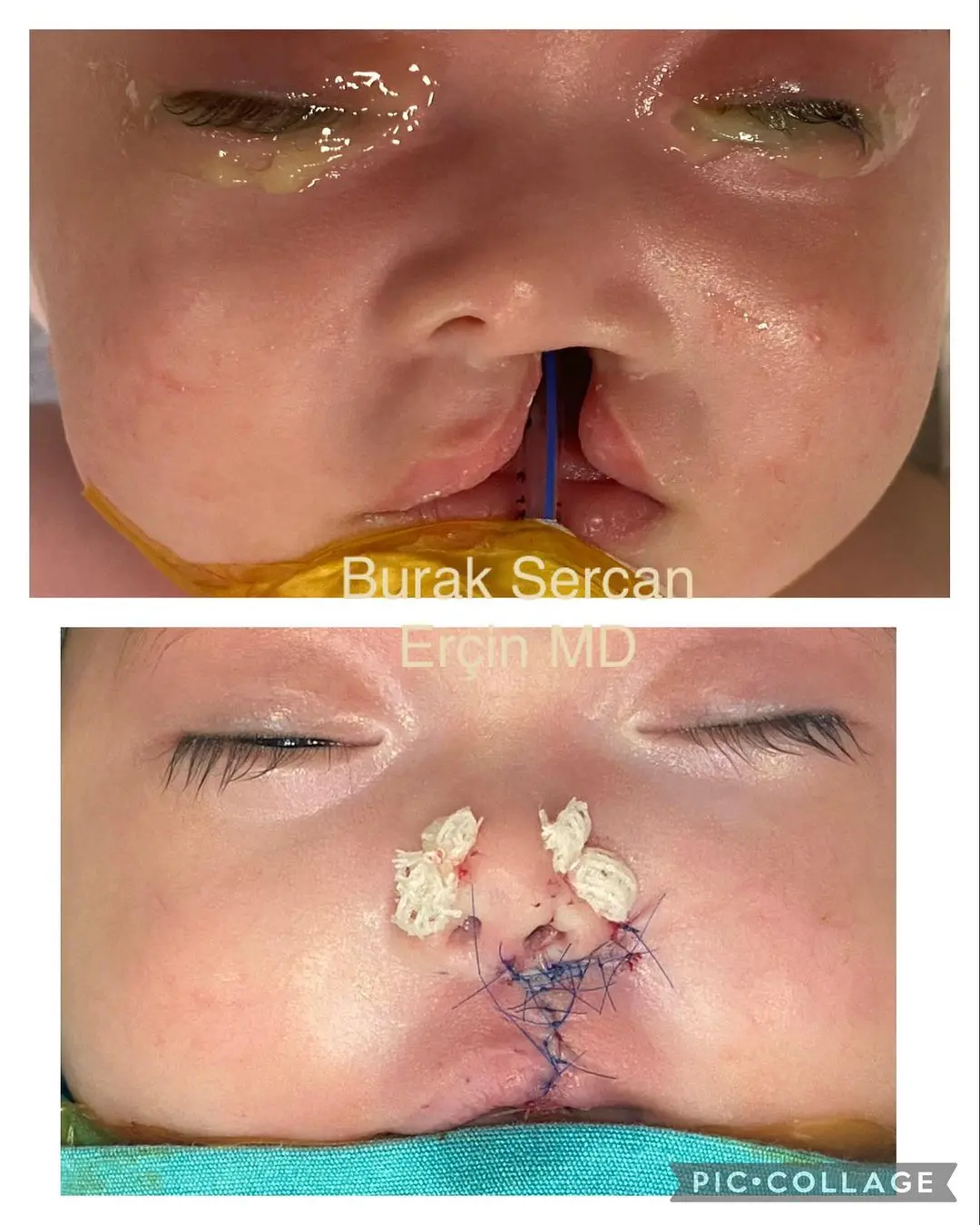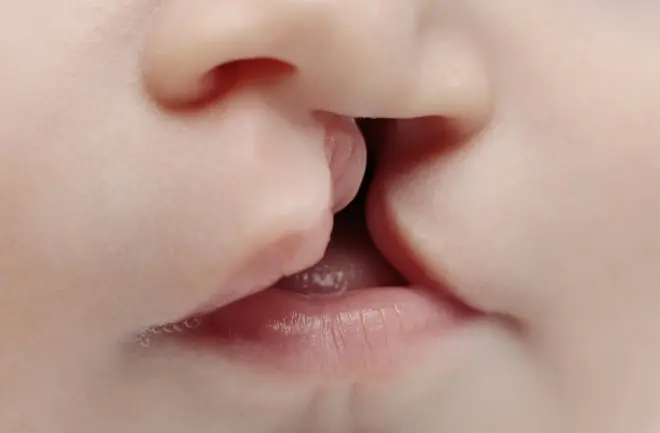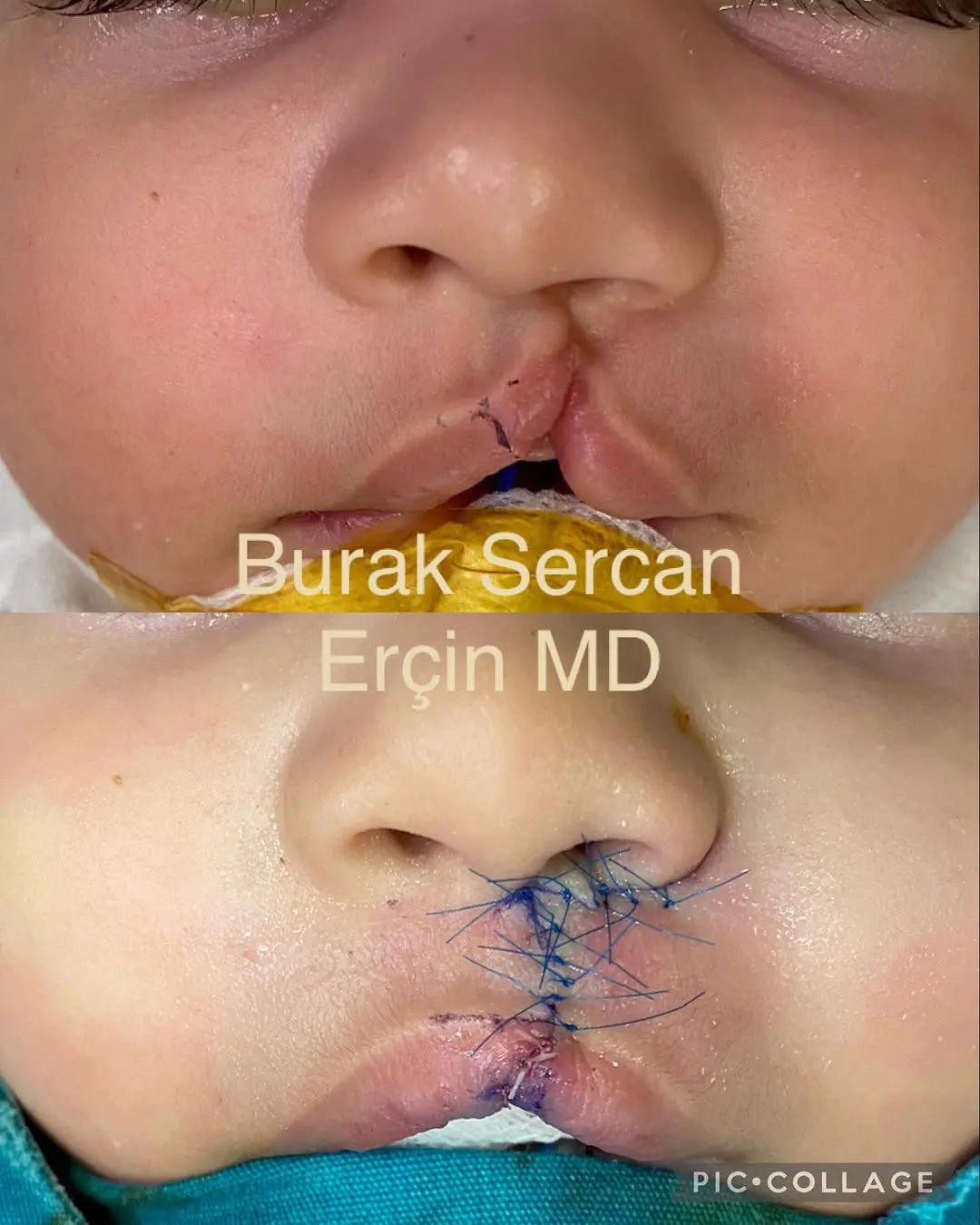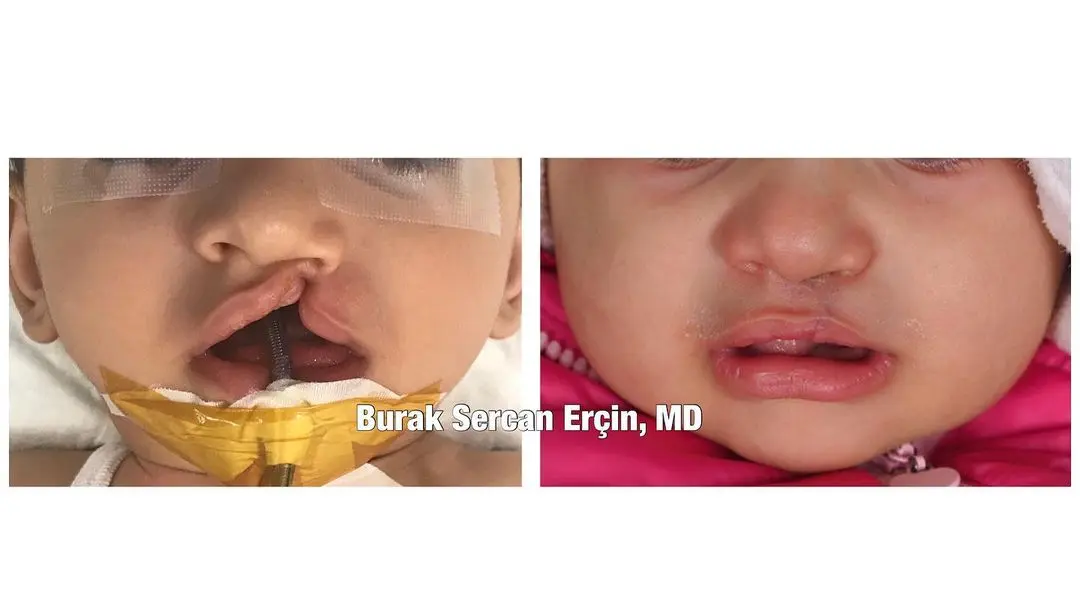What Is Cleft Lip Treatment?
Cleft lip is a congenital condition where the upper lip doesn’t form properly during fetal development. It is a relatively common condition and affects one in every 700 newborns. While the exact cause is unknown, factors such as genetics, maternal smoking or alcohol use, and certain medications during pregnancy may increase the risk of cleft lip.
The biggest problem seen in the early period (first months after birth) in babies born with cleft lip-palate anomaly is the slow development of these children due to nutritional difficulties and the occurrence of frequent upper and lower respiratory tract infections.
Cleft lip repair treatment typically involves surgery to repair the lip and restore its normal appearance and function. The cleft lip repair surgery is usually performed when the child is between 3 to 6 months old, although the exact timing may vary depending on the child’s health and the severity of the condition.
If you suspect that your child has a cleft lip, it is important to seek medical attention as soon as possible. A qualified healthcare professional can provide an accurate diagnosis and guide you through the treatment process.
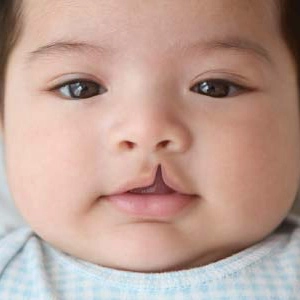
How Does a Cleft Lip Happen?
The exact cause of cleft lip is unknown, but it is believed to be a combination of genetic and environmental factors. Certain medications, maternal smoking, and alcohol consumption during pregnancy can increase the risk of cleft lip. Additionally, a family history of cleft lip and palate can increase the likelihood of a baby being born with the condition.
Cleft lip can also occur as part of a syndrome that affects multiple parts of the body, such as the Pierre Robin sequence or Van der Woude syndrome.
Regardless of the cleft lip cause, it can have significant functional and cosmetic implications, affecting a child’s ability to eat, speak, and socialize. Timely intervention and treatment by a skilled team of healthcare professionals can greatly improve the outcome and quality of life for those affected by cleft lip.
What Are the Treatment Options Available for Cleft Lip and Palate Repair?
Surgical options for cleft lip and palate include primary lip and nose repair, palatoplasty, and pharyngoplasty. Non-surgical options include orthodontic treatment, speech therapy, and hearing evaluation.
Primary lip repair is usually performed when the child is between 2-3 months old, while palatoplasty is usually performed when the child is between 6-18 months old. Pharyngoplasty may be recommended later in life to improve speech and swallowing function.
Orthodontic treatment is important to correct any dental and jaw misalignments that may result from cleft lip and palate repair. Speech therapy is necessary to improve communication skills and address any speech problems that may arise. Hearing evaluation is also crucial, as some children with cleft lip and palate may have hearing impairments.
What Are the Different Types of Cleft Lip and Palate?
There are different types of cleft lip and palate, each varying in severity and location.
The types of cleft lip include unilateral cleft lip, bilateral cleft lip, and midline cleft lip. Unilateral cleft lip is a single opening on one side of the lip, while bilateral cleft lip is two openings on both sides of the lip. Midline cleft lip is a rare condition that involves a separation in the middle of the upper lip.
The types of cleft palate include complete cleft palate, incomplete cleft palate, and submucous cleft palate. Complete cleft palate is a separation of the entire palate, while incomplete cleft palate is a partial separation. Submucous cleft palate is a hidden separation of the palate that may not be visible on the surface.
What Is the Surgical Procedure for Repairing a Cleft Lip?
The surgical procedure for repairing a cleft lip usually takes about 1 to 2 hours and is typically performed under general anesthesia. Here is all you need to know about the surgical procedure for repairing a cleft lip:
Timing: The ideal timing for cleft lip repair is between 3 and 6 months of age. However, cleft lip surgery can be done at any age.
Incision: The surgeon will make an incision on both sides of the cleft, extending from the lip up to the nostril.
Tissue Rearrangement: The surgeon will then rearrange the tissues to create a more normal lip and nostril.
Sutures: The surgeon will use sutures to close the incision and create a more normal lip and nostril.
Bandage: A small bandage will be placed on the incision to protect it.
Recovery: Recovery after cleft lip surgery usually takes about 1 to 2 weeks. During this time, the patient should avoid activities that could put stress on the lip, such as sucking on a pacifier or bottle.
What Are the Potential Risks Associated with Cleft Lip and Palate Surgery?
Some potential risks associated with cleft lip and palate surgery include bleeding, infection, scarring, and anesthesia complications. Additionally, there is a small risk that the surgery may not completely correct the cleft lip or palate, requiring additional procedures in the future.
In some cases, patients may also experience speech or feeding difficulties after cleft lip surgery, although these issues are usually temporary and can be addressed with therapy or additional treatment.
Cleft Lip and Cleft Palate FAQ
What Kind of Speech and Language Development Issues Can Occur with Cleft Lip and Palate?
Cleft lip and palate can cause speech and language development issues, including articulation problems, voice disorders, and delayed language development.
How Can I Find a Qualified Cleft Lip and Palate Surgeon?
To find a qualified cleft lip and palate surgeon, it is important to do your research, ask for referrals from your pediatrician or dentist, and look for board certification and specialized training in craniofacial surgery. In short, call us today!
What Kind of Preparation Is Necessary Before Cleft Lip and Palate Surgery?
Before cleft lip and palate surgery, preparation may include medical evaluations, nutritional counseling, dental assessments, and speech therapy.
What Are the Treatment Options Available for Cleft Lip and Palate?
Treatment options for cleft lip and palate may include surgery, orthodontic treatment, speech therapy, and other supportive therapies, depending on the severity and specific needs of the individual.

